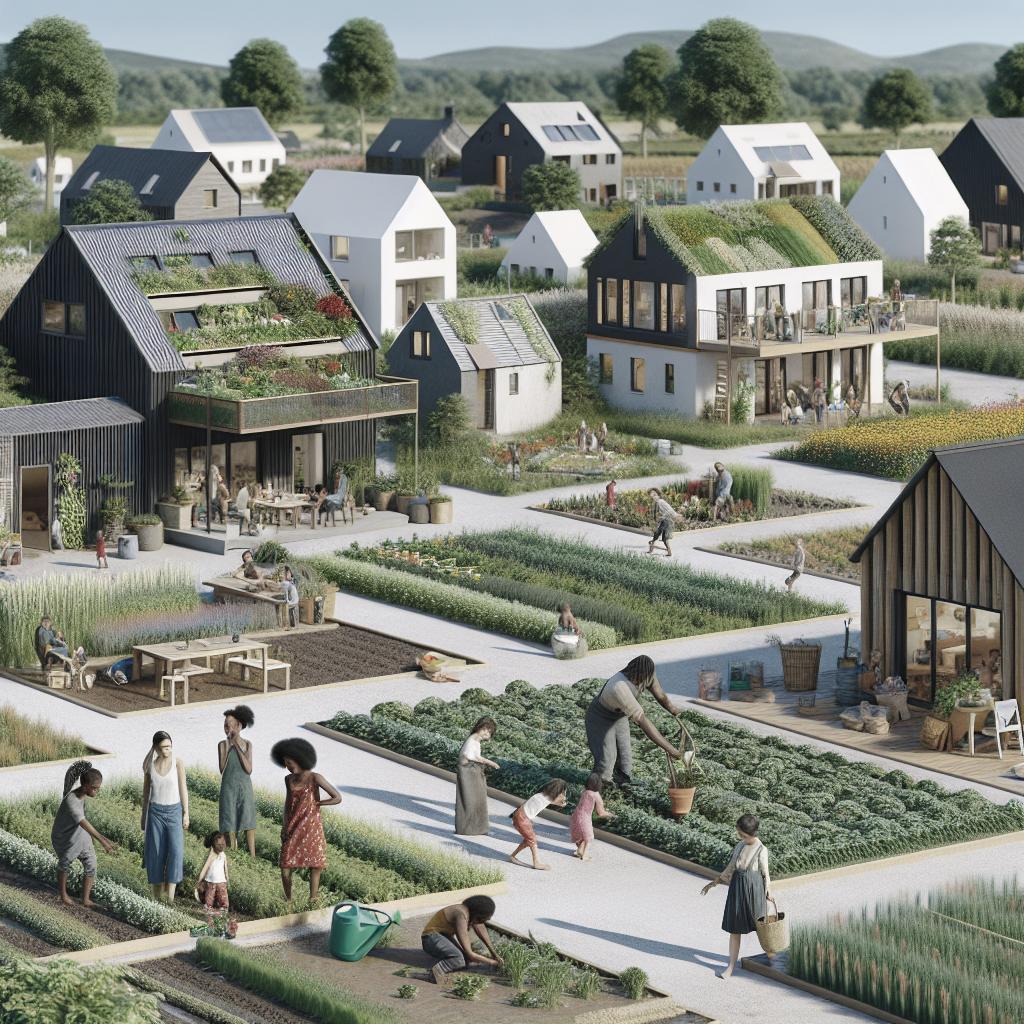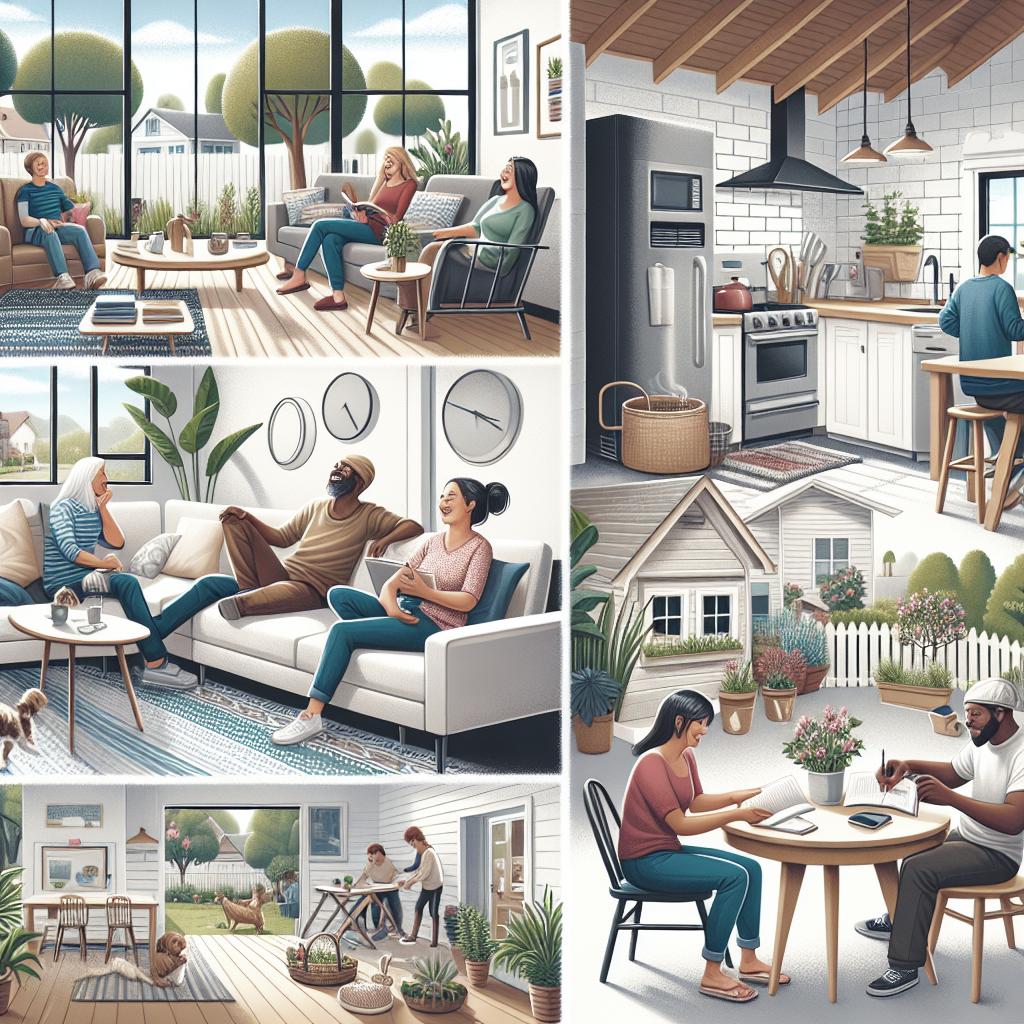Examples of Successful Intentional Communities
The concept of intentional communities isn’t a new one, but in recent years, it has gained traction as more people search for alternative ways of living that promote happiness, environmental sustainability, and social cohesion. This blog post explores successful examples of these communities, showcasing how communal living can enhance well-being, innovation, and environmental consciousness. From the eco-friendly projects in Hong Kong to the woman-only village in India, these examples provide a glimpse into how intentional communities can reshape our understanding of living collaboratively. Dive into these stories to see the myriad of ways intentional communities are thriving across the globe.
Become a Supporting Member
Many people are drawn to intentional communities for the ideals they represent: shared values, collective ownership, and mutual support. Becoming a supporting member of such communities can offer numerous benefits. It provides a unique platform to engage with like-minded people who are committed to sustainability, social justice, and innovative living solutions.
Involvement in these communities often comes with learning opportunities, whether it is about sustainable living practices, conflict resolution, or cooperative economics. While some people choose to live year-round in these communities, others may opt for shorter stays, allowing them to apply the learned principles to their lifestyles elsewhere. Supporting members play a vital role in maintaining the vibrancy and sustainability of these intentional living spaces.
Why Communal Living Can Make Us Happier (Matilda Welin, BBC Culture, April 2024)
Communal living can contribute significantly to our happiness, as illustrated by Matilda Welin in her BBC Culture article. Living in a community helps to alleviate feelings of loneliness and isolation, which are prevalent in modern society. Intentional communities create environments where social connections thrive and where individuals feel a greater sense of belonging.
This sense of connection and collaboration reduces mental stress and fosters a support network. Neighbors often become friends and allies, sharing not only in joy but also in life’s challenges. These communities encourage shared resources and responsibilities, which can free up time and energy for personal interests and increase overall life satisfaction.
The Utopian Machine (Susanna Crossman, Aeon, September 2022)
Susanna Crossman’s piece in Aeon discusses how certain intentional communities have adopted a futuristic approach to living in harmony with technology and nature. Known as “Utopian Machines”, these communities creatively integrate sustainable technology into their infrastructure.
Such communities serve as living labs that experiment with renewable energy, advanced agricultural practices, and eco-friendly architecture. By reimagining urban planning and reducing dependency on fossil fuels, Utopian Machines exemplify how innovation can meet sustainability. These intentional communities are not just theoretical exercises but real-world examples of how environmental and social challenges can be addressed through communal living.
Why These Hong Kong Urbanites Are Farming (Kootyin Chow, SAPIENS, April 2023)
Kootyin Chow’s article in SAPIENS spotlights the urban farming communities in Hong Kong. Faced with urban constraints and a growing appetite for fresh produce, these communities have developed rooftop farms and community gardens as sustainable food sources.
These farming initiatives are not only about growing food but also cultivating relationships among urban dwellers. By sharing in the work and rewards of farming, members strengthen community ties and develop a deeper understanding of environmental stewardship. These urban farming projects highlight the resourcefulness of city dwellers in fostering community engagement and sustainability in densely populated areas.
Intentional Homeless Community in Berkeley (David Bacon, Street Spirit, March 2016)
David Bacon’s narrative in Street Spirit provides insight into an intentional community for the homeless in Berkeley. Faced with a lack of shelter options, this community organized itself to create a safe and supportive living environment.
Their model involves shared living spaces, communal resources, and a governance structure that includes all members. This self-organized community not only offers hope and dignity to its members but also challenges traditional perspectives on homelessness. By forming their own intentional community, they have created an environment where marginalized people can regain control and autonomy over their lives.
The Last Glimpses of California’s Vanishing Hippie Utopias (David Jacob Kramer, GQ, September 2021)
In GQ’s exploration of California’s fading hippie utopias, David Jacob Kramer examines the legacies of these cultural enclaves. Once vibrant with countercultural ideals, many of these communities face challenges from economic pressures and societal shifts.
Despite these challenges, the foundations of these utopias—emphasis on eco-friendly living, communal support, and holistic health—continue to inspire new generations. By revisiting the successes and struggles of these hippie communities, one can glean insights into the perseverance required to uphold shared ideals against a changing societal backdrop.
‘We Have Brothers, Sons, Lovers–But They Can’t Live Here!’ The Happy Home Shared by 26 Women (Anita Chaudhuri, The Guardian, August 2023)
Anita Chaudhuri sheds light on a unique all-women community in her Guardian article. This vibrant community of 26 women lives by the motto ‘We Have Brothers, Sons, Lovers–But They Can’t Live Here!’ focused on providing a space for women to thrive autonomously.
The community’s ethos revolves around empowerment and mutual support, featuring shared responsibilities and decision-making. Through workshops and communal activities, members nurture each other’s personal growth while remaining independent of external male influence within their living space. This distinct intentional community underscores the power and camaraderie found in female-led environments.
Summary of Main Points
| Subheading | Key Points |
|---|---|
| Become a Supporting Member | Engagement with causes, learning opportunities, sustains community vibrancy |
| Why Communal Living Can Make Us Happier | Enhances social connection, reduces stress, promotes shared resources |
| The Utopian Machine | Combines technology with sustainability, exemplifies eco-friendly innovation |
| Why These Hong Kong Urbanites Are Farming | Utilizes urban spaces for farming, fosters community engagement and sustainability |
| Intentional Homeless Community in Berkeley | Empowers marginalized people, creates autonomous living environment |
| The Last Glimpses of California’s Vanishing Hippie Utopias | Struggles with economic shifts, inspires eco-friendly and communal ideals |
| ‘We Have Brothers, Sons, Lovers–But They Can’t Live Here!’ | Focuses on female empowerment, autonomous living for women |


